
JAPANESE PRINTS
A MILLION QUESTIONS
TWO MILLION MYSTERIES
Ukiyo-e Prints浮世絵版画 |
|
formerly
Port Townsend, Washington now Kansas City, Missouri |
|
UTAGAWA KUNIYOSHI |
|||
|
歌川国芳 |
|||
|
1797-1861 |
|||
|
Title: Sumidagawa Gonichi no Omokage |
|||
|
|
Date: 1848 |
|
|
|
|
The figure on the left is Ichikawa Danjūrō VIII as Shinobe Gunsuke 下部軍助 |
|
|
|
Censor's seals: Muramatsu and Yoshimura 村松 吉村 |
|||
|
Publisher: Ebiya Rinnosuke
海老屋林之助 |
|||
| Signature: Ichiyūsai Kuniyoshi ga | |||
| 署名: 一勇斎国芳画 | |||
|
Sizes: Left Panel - 14 1/8" x 10" Center Panel - 14 1/4" x 10" Right Panel - 14 1/8" x 10" |
|||
|
There is a copy of this triptych at the Hankyu Culture Foundation. |
|||
|
Originally priced at $580.00 Now on sale for $440.00 SOLD! |
|
There are copies of the left and center panel in the Ritsumeikan University collection of prints. They do not appear to own the whole triptych. The whole triptych is in the collection of the Hankyu Culture Foundation. |
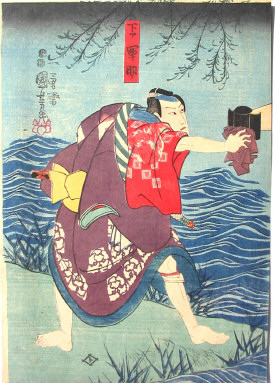 |
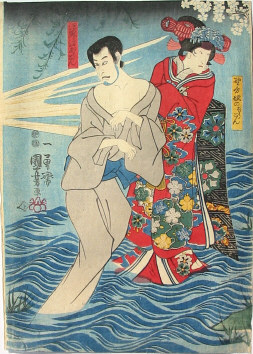 |
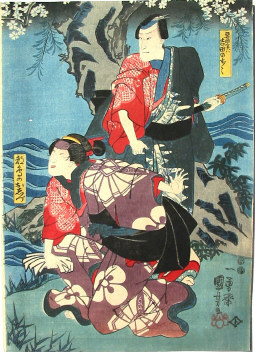 |
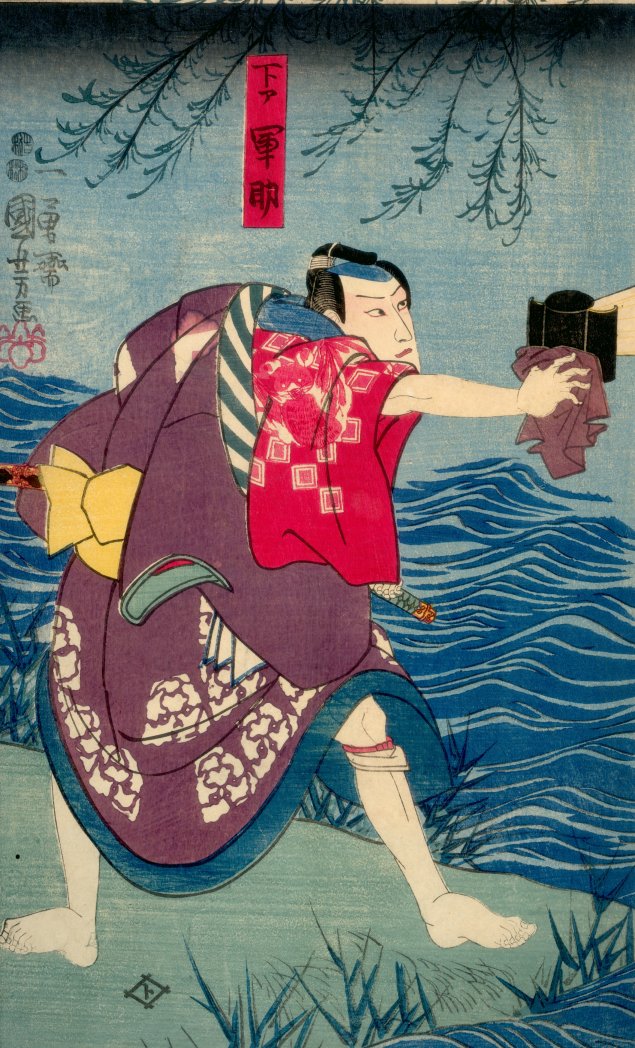
|
|
|
|
|
|
|
|
|
|
|
|
|
|
||||
|
|
||||
|
|
||||
|
|
||||
|
|
This detail from the left hand print illustrates a red bat shown full frontal. I didn't notice it at first, but it is definitely there. Although this is a Japanese print there are many connections to Chinese motifs like the bat. In China a red bat was considered a most propitious symbol. |
|
Above are the date/censor seals, signature and the artist's kiri seal. |
|
|
|
|
|
|
|
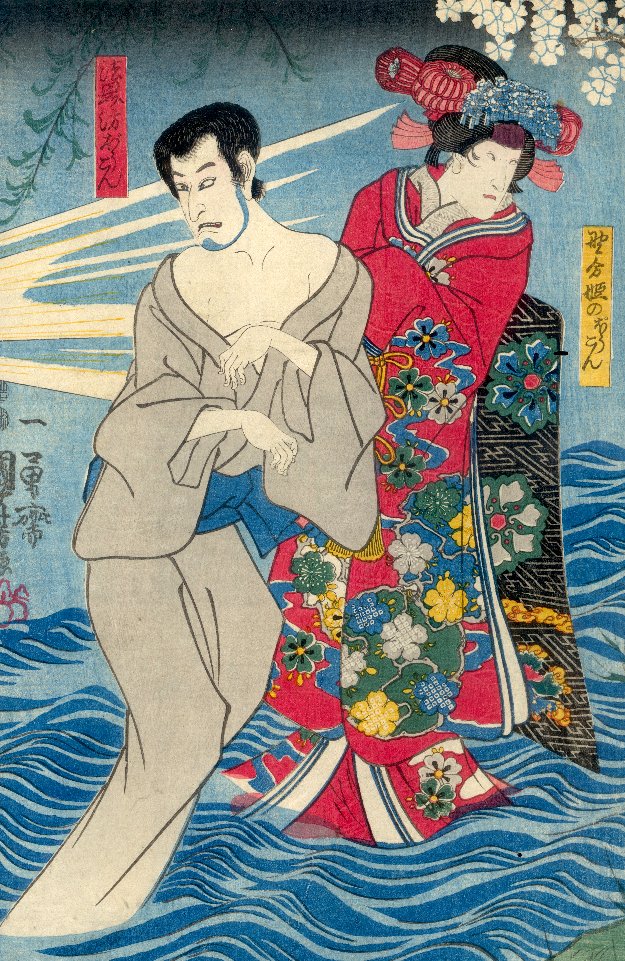
|
The figure on the left represents the ghost of Hōkaibō. The text in the red label reads Hōkaibō bōkon (法界坊 ぼうこん). The onnagata on the right plays the ghost of Princess Nowake or Nowakehime. The text in the yellow label reads 野分姫ぼうこん.
Our contributor A.K. assisted enormously in providing the information shown above. Hell, he didn't just contribute. He did the work. Thanks A.K.! |
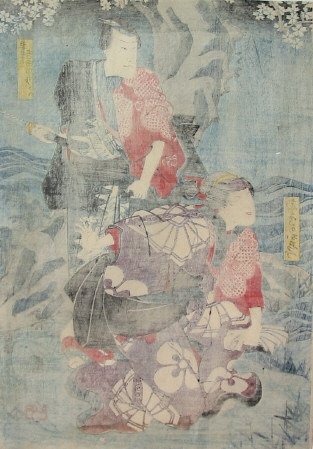 |
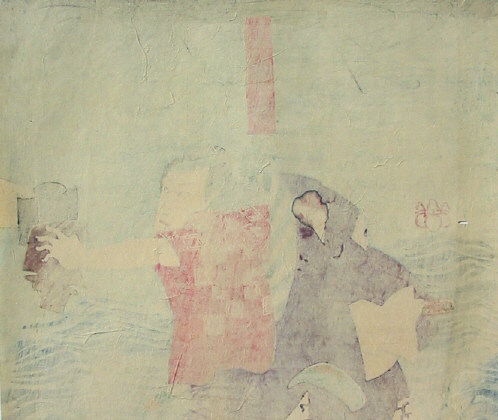 |
||
|
Detail of backside of left panel. |
|||
|
Detail of backside of right panel. |
|
|
|
|
|
|
|
|
|
Notice how the actor uses a cloth to hold what I originally thought was a lantern. But thanks to an e-mail from a visitor to this site I now know that this is actually a small Buddhist altar.
On July 27, 2007 Lee from New York wrote: "Regarding the Kuniyoshi "Kabuki Ghost" print, you may or may not be aware that this play was being performed here in New York this week.... In the performance, what you referred to as a lantern was a small portable Buddha shrine. The character was fending of the ghost with this holy object, as one might do with a cross and vampire in Western fiction."
Thank you so much Lee! Without your help I may never have known this information and my mistake would never have been corrected. Thanks! [By the way, what makes Lee think the cross and vampire thing is fiction? This question is rhetorical, of course - and very tongue-in-cheek.] |
|
|
|
|
||||
|
|
||||
|
|
||||
|
|
||||
|
|
||||
|
|
||||
|
|
|
|
|
Detail of the figure on the far right for better viewing. |
|
|
|
|
Detail of the onnagata from the right panel. |
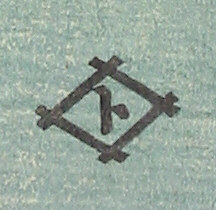
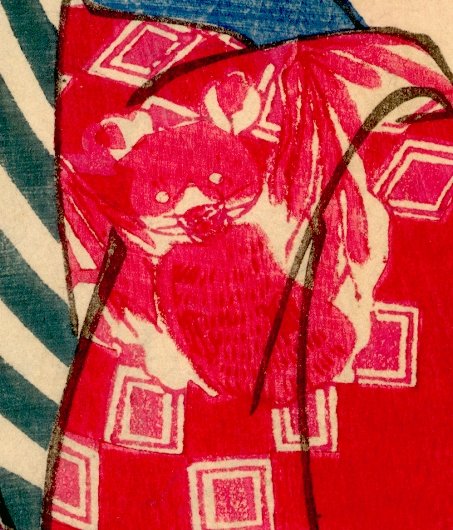
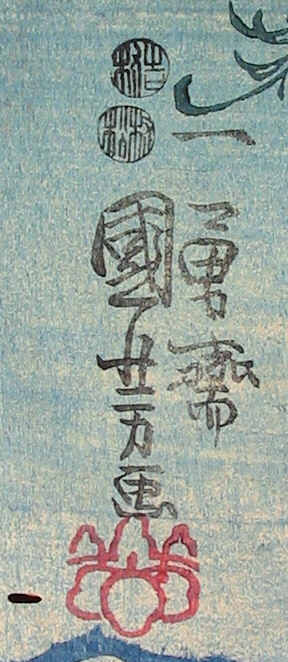
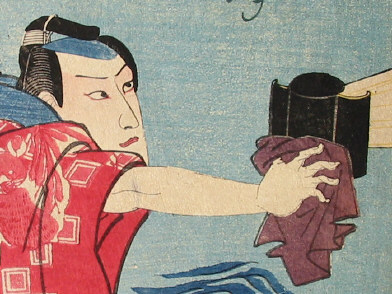
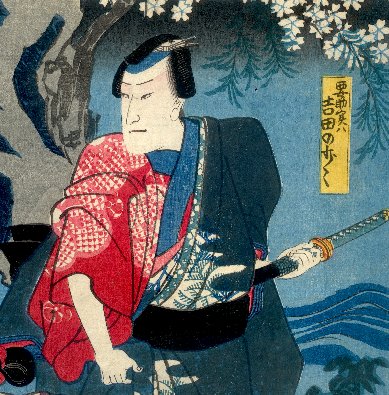
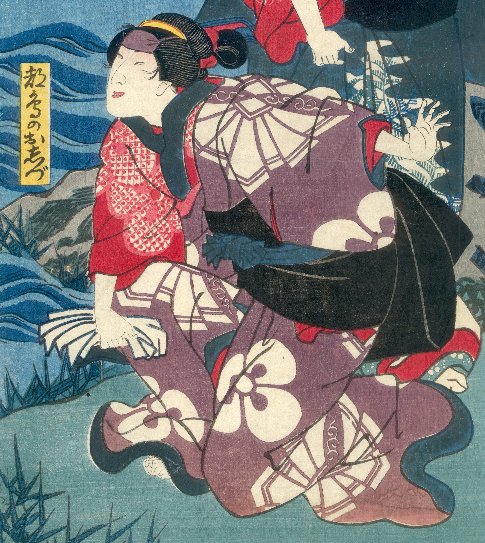
 HOME
HOME